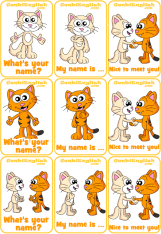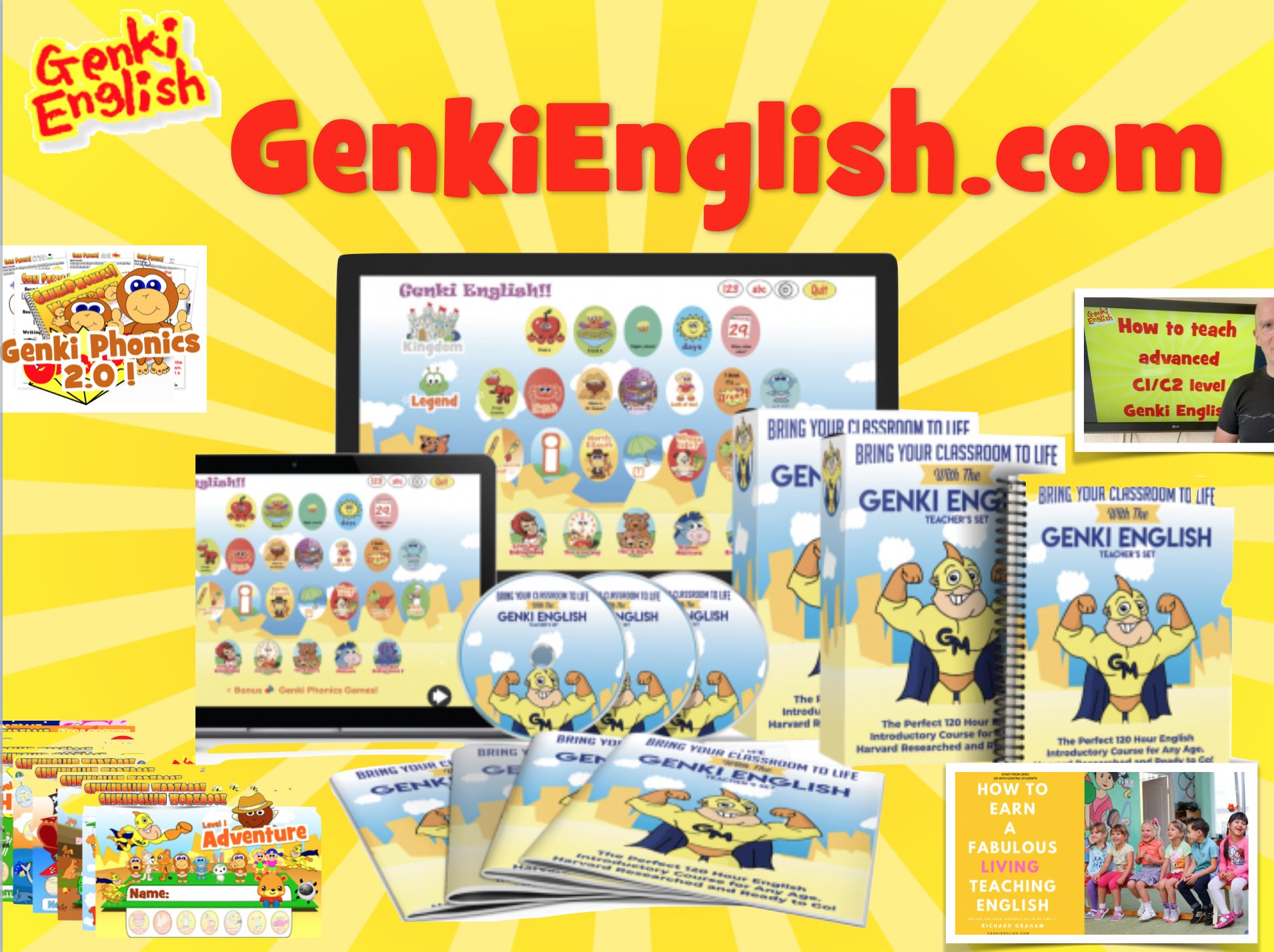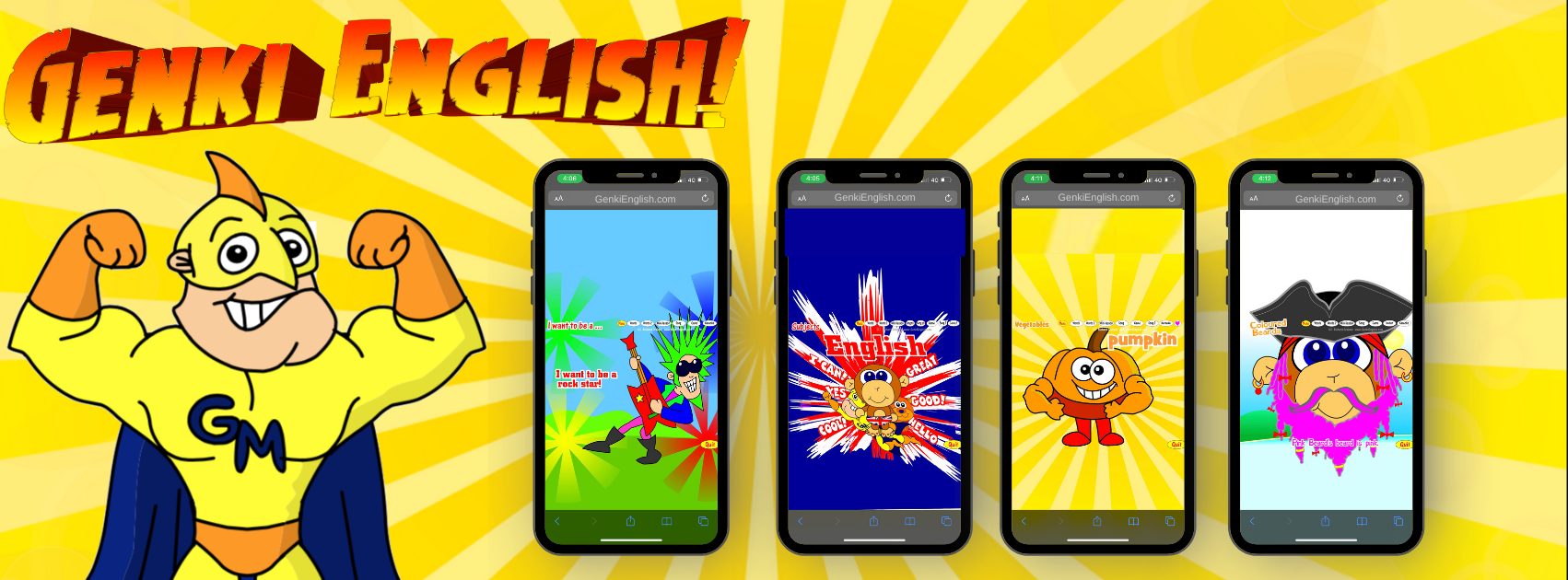First of all, “Wow! Thank you!” for all the fantastic comments on the How Long Do *You* Think It Takes To Get Fluent? question. There have been lots of personal stories, research based insights, a few (quite shocking!) surprises (decades to learn a language!) and also a few controversial things too. 🙂 I’ll write a full post about it next week, but please keep your answers coming and do have a read through everyone’s replies, I’m sure you’ll find them fascinating.
But … revenons à nos moutons…
To go with last week’s What’s your name? song software update I’ve just uploaded some new “What’s your name?” A4 cards and minicards. Do let me know if you like them!


Be genki,
Richard
P.S. Well, we’re not getting entirely back to our sheep….. One of the big “cheats” to getting fluent quickly is in *what* you study. As I say I’ll talk about this more later in respect to your own learning, but with regards teaching English, just have a look at today’s two phrases: “What’s your name?” and “My name is …?” Of course the main reason we teach them is that it’s really useful English that the kids can, and want to, use straight away. But also look at just how much is contained in those few phrases, contractions, possessive pronouns, sentence word order, question word order, plus some very useful vocab we can use elsewhere. All from just two sentences. If you can keep this up, you can introduce, and get kids used to using, the most popular grammar of English in remarkably few lessons. According to Tim Ferriss there are 171,476 words in the Oxford English Dictionary. But …. just 25 of them represent 33% of written English. The key, whether teaching or learning, is in selecting those 25. 😉




Richard,
a) the cards are really cute. Now we have a monkey a rabbit and a cat “family”~~~these three might make a great play?!!!
b) thanks for starting the topic of learning languages, and thanks for introducing Tim Ferris. His book is amazing, as is his speech. And actually my motto since High school is: If I have wether to go this way or that, I check which is most scary for me: then I know this is my way to go; and it’s what I’ve been teaching my kids and students. So it was all very impressive.
c) now the question is HOW to make things as easy as possible. This is sometimes really tricky with a grown-up mind, isn’T it. I always tell me JH kids to talk as if they are addressing 3 year olds (to exaggerate) because otherwise they make sooooo complicated sentences.
why are they looking for the word
“hand out” if they can use “give” “receive” instead of “get”, etc etc
Writing it down in english it is really easy, but if the learner is thinking in his own language and usually says the word in L1 for “hand out” =”give” won’t occur in his head.
If you have any tricks to go with, please let them come.
and finally another question:
d)
in Japan there is the tendency to teach: “what’s your name?” “I’m…” instead of “My name is”””” even in JH they are told that the latter one is old fashioned and hardly used.
Kids who come from other schools all answer with “I’m …”
I agree, that it may sound more natural in many cases (though I don’T think in all) but personally I stick with the “My name is…” . The main reason is, that I don’t like the idea of people identifying with their name too much. If I say “I’m Margit” it’s a complete identification (I=Margit), but I am NOT my name and I don’t really care if people call me Magi, Maggy or Margrit. If I feel they are addressing ME. So, “Margit” is “My name”.
What would you suggest. Forget about my philosophy and go for “I’m” anyway?
Hi Margit, you always ask the good questions!
a) I never thought of that – let’s see what we can do!
b) 🙂
c) Yep, this a great technique (the 3 year olds!) I do it all the time in workshops where teachers very often hyperoverubercomplicate the English they use. 🙂
Maybe we should make a worksheet (that we can translate into the kids native language) with several concepts that they have to think how to explain in a simple way?
e.g.
hand out
Grandmother (my mother’s mother!)
Watermelon (big, big, heavy green fruit)
What others can we add?
d) I have another reason too! Whilst there is a good argument for teaching “I’m …” (it’s more natural and used more often) from a language *learner* point of view “My name is …” is really useful.
Simply because very often if you ask someone the straight question they probably won’t understand your accent or pronunciation. This is particularly so as it’s right near the beginning of the curriculum, but it also happens to me (a native speaker!) when I head to places overseas.
So… instead of just repeating the question, the best solution is to say “My name is ……. What’s your name?” That way it gives the listener’s ear time to adjust to your accent AND gives them time to figure out context for the question.
This soooo useful for language learners!
This is one of the big reasons I keep the answers in the GE songs as full sentences, because whilst they might not be the most natural, they are the most help in real communication situations!!
Whatdoyouthink?
vs. I think this is useful. What do you think? 🙂
(plus it also sounds way cooler when you can make long speeches like that after just a few lessons! 🙂
Hi Margit!
Hi Richard!
Hi everyone!
I also thank you Richard for all the challenging questions and your work on upgrading materials.
And I thank you margit for your interesting comments, which contain many great ideas.
Unfortunately I have’t seen the post about Tim Ferris. I surely have missed something 🙁
As for the last topic, here in Russia we don’t say “I’m …” to introduce ourselves at all. We don’t say “My name is …” either. What we say is “They call me …” 🙂
But we also start teaching English with this simple phrase just to let kids feel they CAN speak English from the very first lesson. And the phrase “What’s you name?” is a bit complicated for it has the sound /w/ which is unusual for Russian language.
All the best for everyone!
Hi Julia, here’s Tim’s post on how to learn any language in 3 months!
http://www.fourhourworkweek.com/blog/2009/01/20/learning-language/
You know what:
I just hd to teach the kids the word “juggle” when I got to a link of “How to juggle three balls” in Tim Ferriss’ newest book.
I tried it, and within 10 minutes I was able to do one round, and after about 60 minutes practice I can do 3 rounds and it really feels like I’m juggling. The rest is a bit more practice. VEry motivational to try all kind of things!
🙂 And thank you Margit (and Kamila of course!) for the great post on the forum!
http://genkienglish.net/clipart/forum/viewtopic.php?t=1495